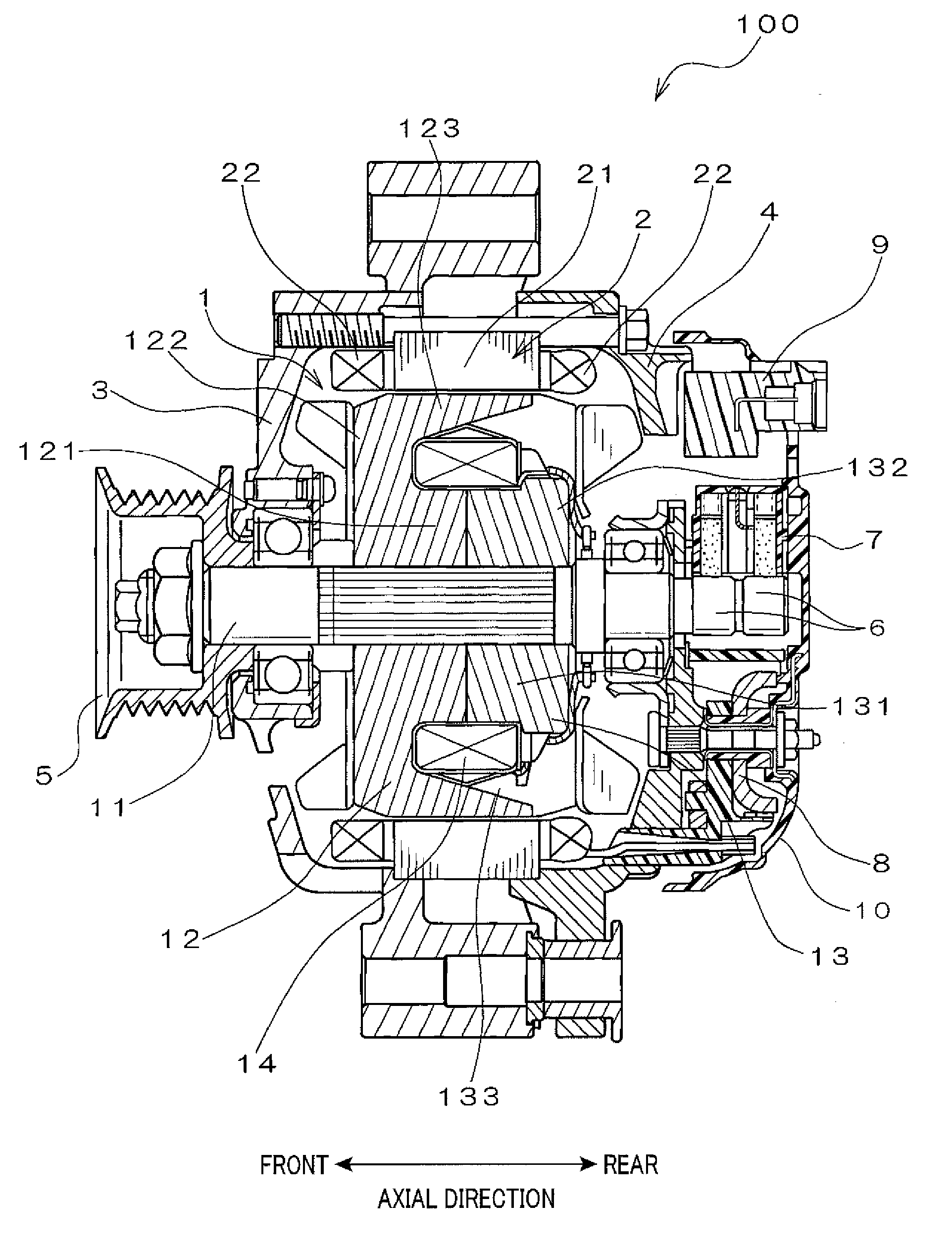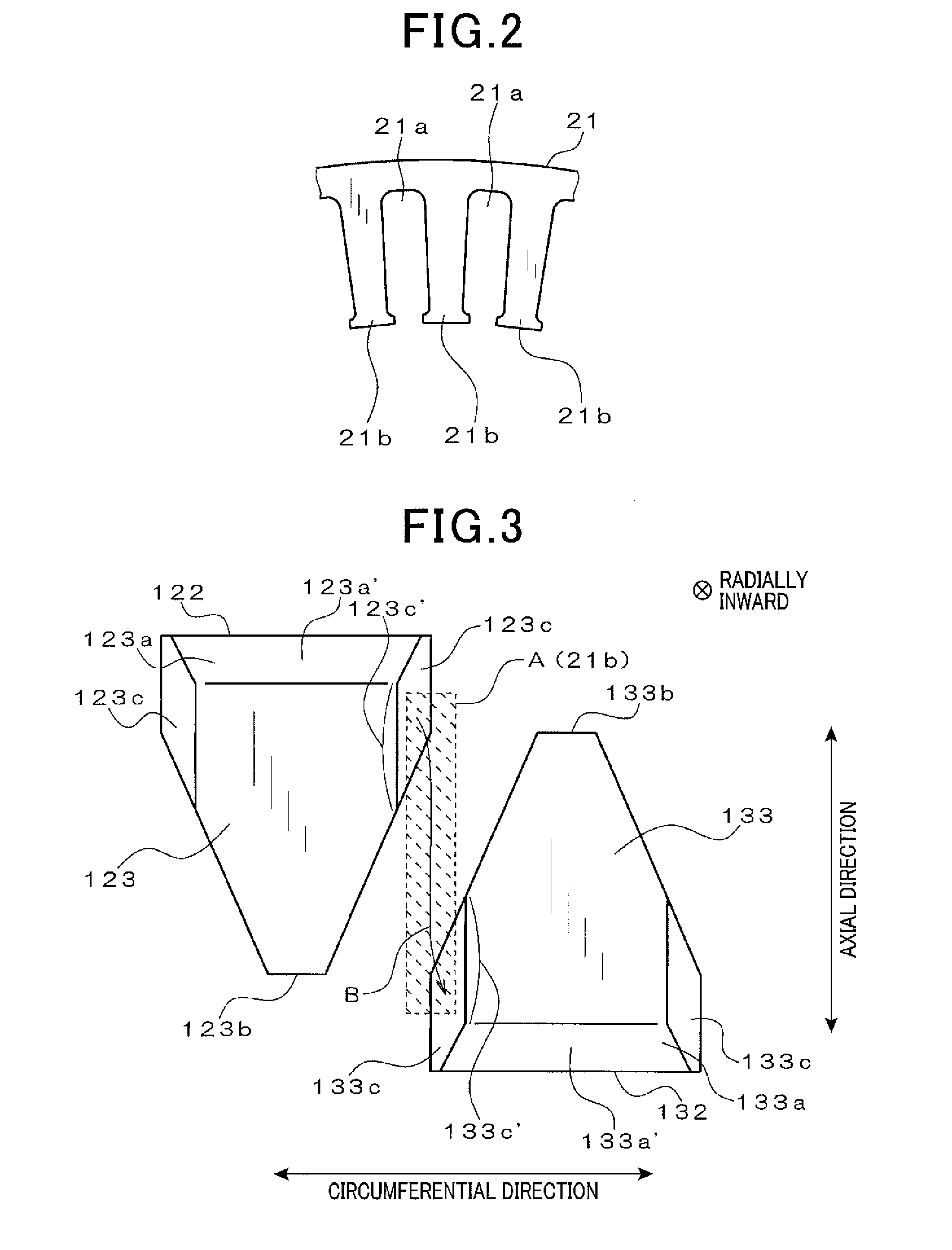Rotor for automotive alternator
- Summary
- Abstract
- Description
- Claims
- Application Information
AI Technical Summary
Benefits of technology
Problems solved by technology
Method used
Image
Examples
Embodiment Construction
[0033]FIG. 1 shows the overall configuration of an automotive alternator 100 which includes a rotor 1 according to an exemplary embodiment. The alternator 100 is designed to be used in a motor vehicle, such as a passenger car or a truck.
[0034]As shown in FIG. 1, the alternator 100 includes, in addition to the rotor 1, a stator 2, a front housing 3, a rear housing 4, a pulley 5, a pair of slip rings 6, a brush assembly 7, a rectifier 8, a voltage regulator 9, and a rear cover 10.
[0035]The stator 2 is arranged radially outside of the rotor 1. More specifically, the stator 2 includes an annular stator core 21 that is disposed so as to surround the rotor 1 and a three-phase stator coil 22 wound around the stator core 21.
[0036]Moreover, as shown in FIG. 2, the stator core 21 has a plurality of slots 21a formed therein. The slots 21a are spaced from one another in the circumferential direction of the stator core 21 at predetermined intervals and open at the radially inner periphery of the...
PUM
 Login to View More
Login to View More Abstract
Description
Claims
Application Information
 Login to View More
Login to View More - R&D
- Intellectual Property
- Life Sciences
- Materials
- Tech Scout
- Unparalleled Data Quality
- Higher Quality Content
- 60% Fewer Hallucinations
Browse by: Latest US Patents, China's latest patents, Technical Efficacy Thesaurus, Application Domain, Technology Topic, Popular Technical Reports.
© 2025 PatSnap. All rights reserved.Legal|Privacy policy|Modern Slavery Act Transparency Statement|Sitemap|About US| Contact US: help@patsnap.com



